The Redefining Creativity: How AI is Shaping Gen Z’s Artistic and Musical Landscape
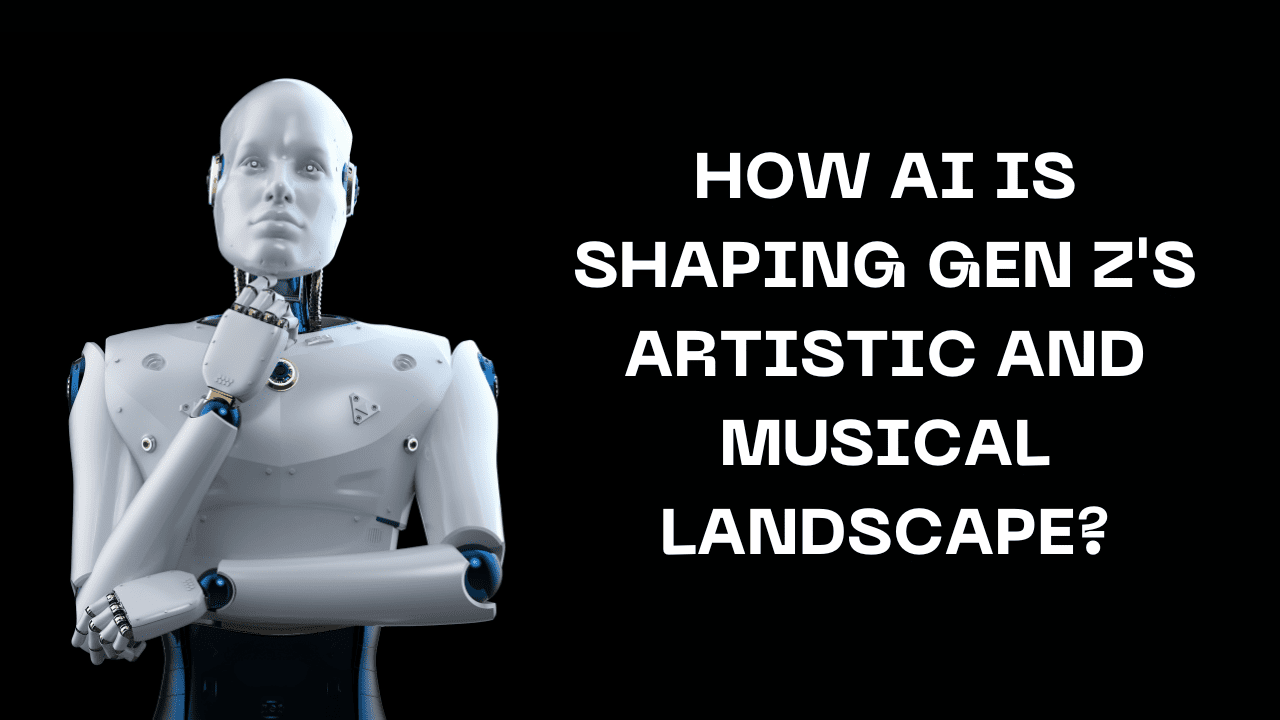
Artificial Intelligence (AI) is not only transforming industries traditionally rooted in logic and analytics but is also making significant inroads into the realms of art and music, challenging and expanding our understanding of creativity.
By leveraging tools like DALL-E for imagery and various AI platforms for music composition,
AI is redefining the boundaries of artistic expression.
Lets delves into AI’s burgeoning role in the arts, highlighting notable case studies and exploring the implications for the creative world.
AI in Art and Imagery: The DALL-E Phenomenon
DALL-E, an AI program developed by OpenAI, has captured the imagination of artists and technologists alike by generating images from textual descriptions.
This tool exemplifies AI’s capability to create complex, nuanced artwork that resonates with human emotions and perceptions.
Case Study: “The First AI-Generated Artwork at Auction”
In 2018, a piece titled “Edmond de Belamy,” created by the AI algorithm developed by the Paris-based collective Obvious, was sold at Christie’s auction for an astonishing $432,500.
This event marked a historic moment, challenging traditional perceptions of creativity and the role of the artist.
The artwork, generated through a type of AI called Generative Adversarial Networks (GANs), sparked a debate on authorship, creativity, and the value of AI-generated art.
Exploring AI-Generated Music
AI’s innovating into music composition involves algorithms that can create music in various styles and genres, raising questions about creativity, originality, and the future of human musicianship.
Case Study: AI Eurovision Song Contest
In a pioneering event, the AI Song Contest was held in 2020, where teams used AI to compose songs.
The winning entry, “Beautiful the World,” used AI to analyze audio samples of koalas, kookaburras, and Tasmanian devils, creating a melody that incorporated these sounds into music.
This contest showcased AI’s potential to collaborate with humans to produce innovative and captivating music, reflecting on the global challenges and beauty of the natural world.
Implications for the Creative Industries
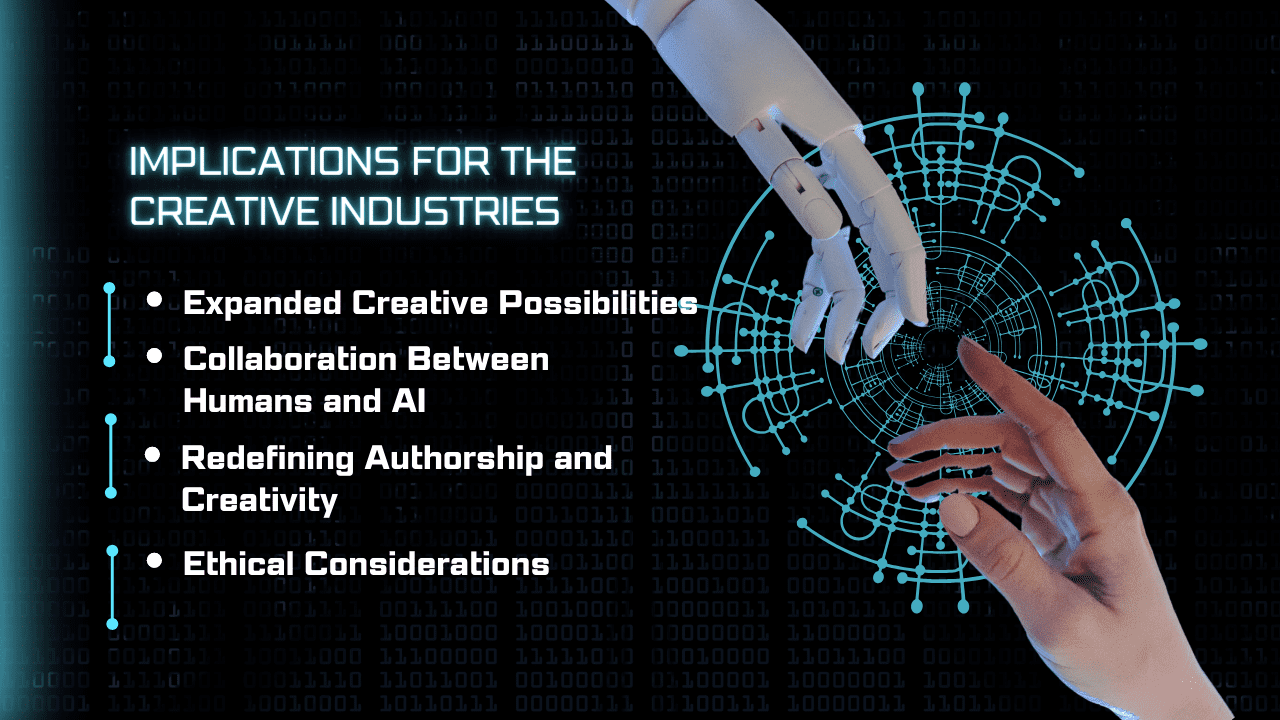
Expanded Creative Possibilities:
AI opens up new avenues for creativity, enabling artists and musicians to experiment with novel ideas and expressions that were previously inconceivable.
Collaboration Between Humans and AI: Rather than viewing AI as a replacement for human creativity, it can be seen as a collaborative tool that enhances and extends the creative process, offering new ways to engage with art and music.
Redefining Authorship and Creativity: The rise of AI-generated art and music challenges traditional notions of authorship, prompting a reevaluation of what it means to be creative and where the value in art truly lies.
Ethical Considerations: As AI continues to make strides in creative fields, ethical considerations regarding the use of copyrighted material, transparency about the use of AI, and the economic impact on human artists and musicians become increasingly important.
Conclusion
The integration of AI into the realms of art and music is not only a testament to its versatile capabilities but also poses profound questions about the nature of creativity and the future of artistic expression.
As AI continues to evolve, it invites us to reimagine the boundaries between technology and art, offering a glimpse into a future where AI and human creativity coalesce to explore new artistic horizons.
The case of “Edmond de Belamy” and the AI Song Contest exemplifies just the beginning of this exciting journey, signaling a future ripe with possibilities for AI-enhanced creativity.
Revolutionizing Healthcare: AI’s Promise for Enhanced Patient Care Across Generations
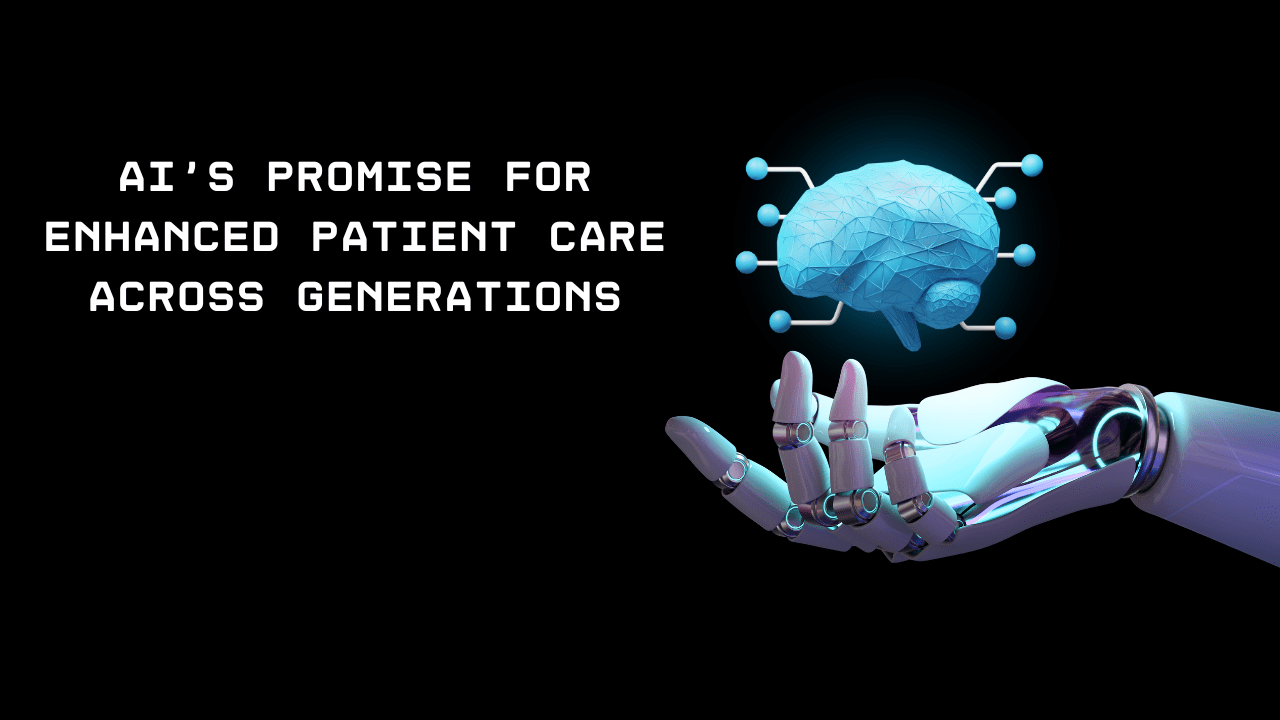
healthcare sector stands at the cusp of a revolution, driven by the advancements in Artificial Intelligence (AI).
From diagnostics to treatment plans and patient monitoring, AI’s integration into healthcare promises to enhance the efficiency and effectiveness of patient care, offering unprecedented opportunities to save lives and improve health outcomes. This blog delves into the profound impact of AI on healthcare, highlights a compelling case study of AI’s life-saving potential, and explores the future prospects of AI in revolutionizing healthcare services.
Revolutionizing Diagnostics and Patient Care
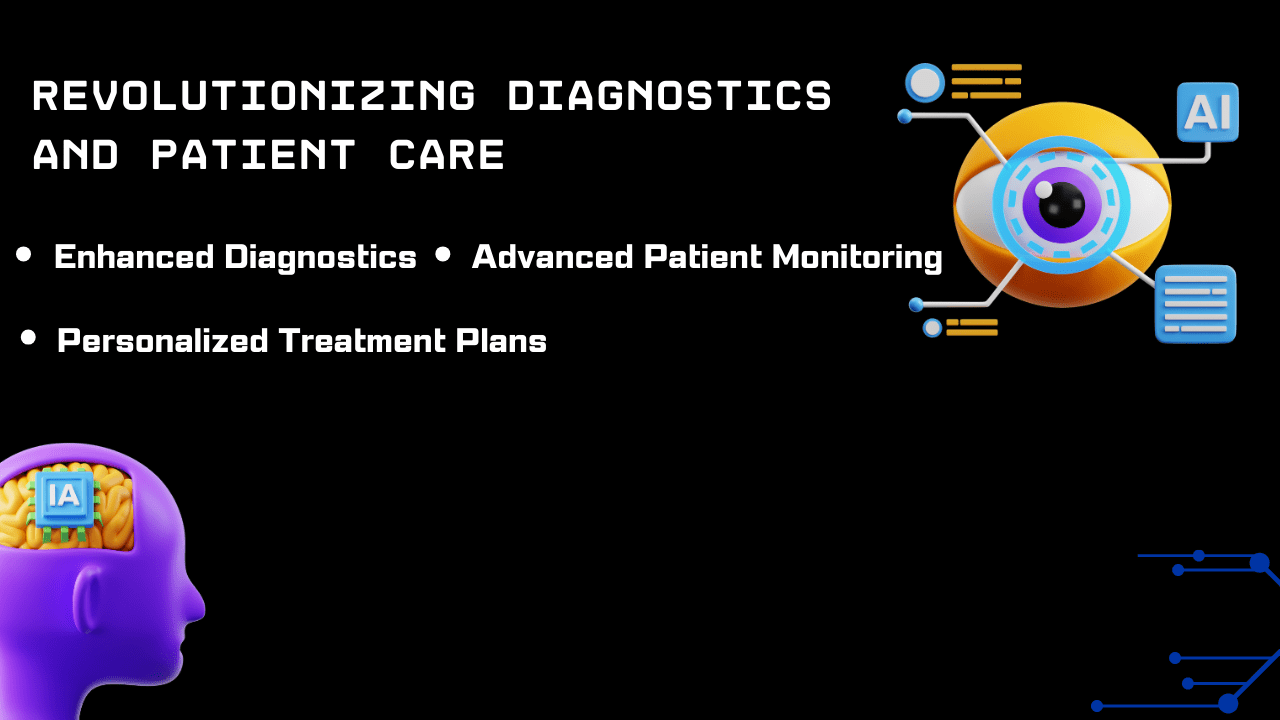
Enhanced Diagnostics: AI algorithms can analyze medical imaging faster and often more accurately than human practitioners, leading to quicker diagnosis and the initiation of treatment.
Tools like Google’s AI model for detecting diabetic retinopathy have shown how AI can match or exceed specialist performance in identifying diseases from images.
Personalized Treatment Plans:
By analyzing data from patient records, genetic information, and current medical knowledge, AI systems can help devise personalized treatment strategies that are optimized for individual patient profiles, improving the chances of treatment success.
Advanced Patient Monitoring:
Wearable AI-powered devices monitor vital signs and predict potential health issues before they become serious, allowing for preemptive medical intervention and continuous care.
Case Study: IBM Watson Health and Oncology

Background
One of the most notable examples of AI’s impact in healthcare is IBM Watson‘s application in oncology. Watson for Oncology assists doctors in identifying effective cancer treatment options by analyzing the medical history of patients and cross-referencing it with a vast database of oncology research, clinical trials, and treatment guidelines.
Breakthrough
In a remarkable instance, Watson for Oncology was used to identify a rare form of leukemia in a patient who had been misdiagnosed for months. By analyzing the patient’s genetic data against its comprehensive oncology database, Watson was able to suggest an accurate diagnosis and a tailored treatment plan that led to significant improvement in the patient’s condition.
Implications
This case not only demonstrates AI’s potential to enhance diagnostic accuracy and treatment efficacy but also highlights how AI can be a lifesaver by pinpointing precise treatments for complex diseases.
Future Prospects: AI in Healthcare
AI in Drug Discovery and Development: AI is set to accelerate the drug discovery process, reducing the time and cost associated with bringing new drugs to market. By analyzing biological data, AI can help identify potential drug candidates much quicker than traditional methods.
Remote Patient Monitoring and Care: With advancements in AI, remote monitoring of patients will become more sophisticated, enabling healthcare providers to deliver personalized care remotely, reducing the need for hospital visits and allowing better management of chronic conditions.
Enhancing Mental Health Services: AI-powered chatbots and virtual assistants could provide immediate support for individuals dealing with mental health issues, offering coping strategies and monitoring mental well-being.
Conclusion
AI’s integration into healthcare is not just an incremental improvement but a paradigm shift that promises to redefine the landscape of medical diagnostics, treatment, and patient care.
The case of IBM Watson Health illustrates just one of the many ways AI can directly contribute to saving lives and improving patient outcomes.
As AI continues to evolve, its urgent to support healthcare professionals and patients alike is boundless, signaling a future where healthcare is more accessible, personalized, and effective than ever before.
Cybersecurity in the Age of AI: Building Safer Digital Worlds for Boomers to Gen Alpha
AI’s Application in Threat Detection
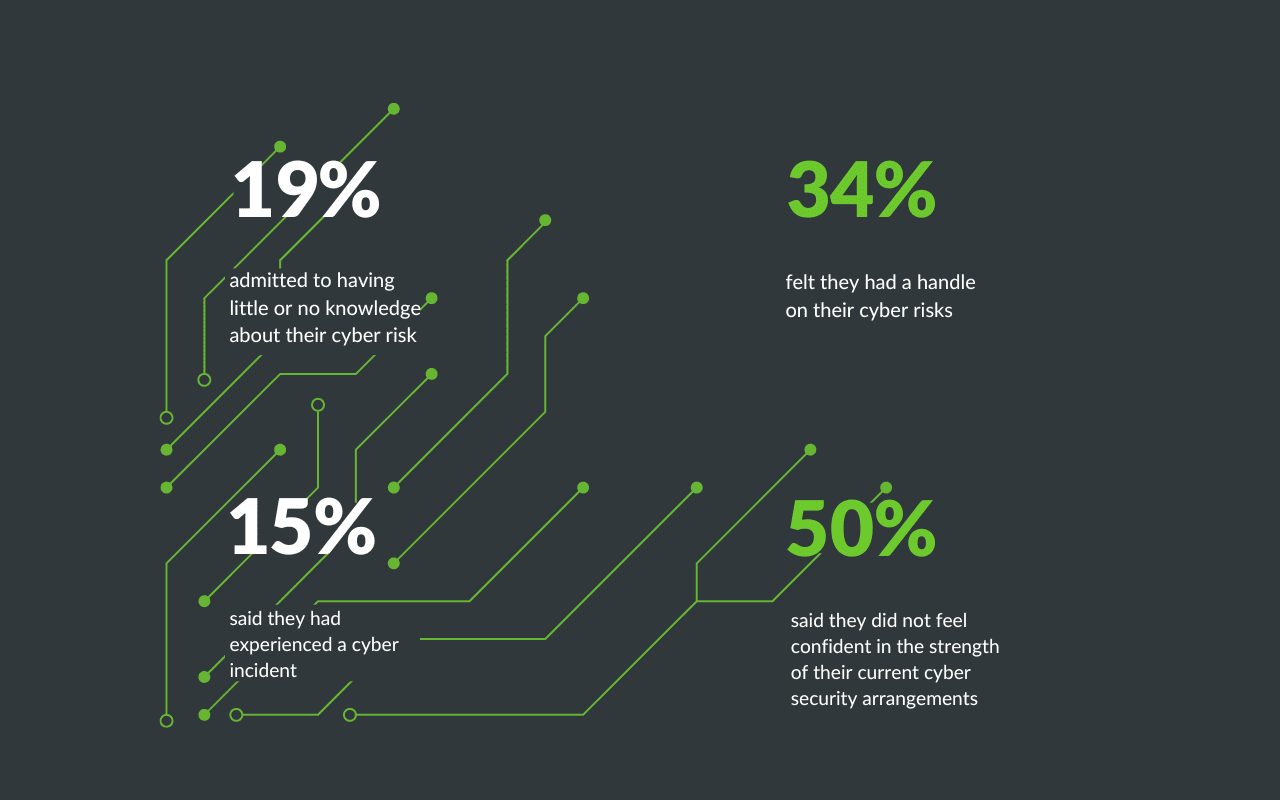
AI and machine learning algorithms are at the forefront of the fight against cyber threats, providing dynamic, intelligent, and scalable solutions. Unlike traditional security measures that rely on known threat signatures, AI-driven systems can learn and adapt, identifying patterns and anomalies that indicate potential security breaches.
Real-Time Monitoring and Anomaly Detection
AI excels in real-time monitoring of vast networks, scrutinizing countless data points simultaneously for suspicious activities. By analyzing historical data, AI models develop an understanding of what constitutes normal network behavior. This baseline allows them to spot deviations, flagging potential threats for immediate investigation. For instance, unusual outbound data transfers can indicate a data breach, while an unexpected spike in login attempts might suggest a brute force attack.
Predictive Analytics
Leveraging predictive analytics, AI can forecast future attack strategies based on current trends. This proactive approach enables organizations to fortify their defenses against anticipated threats, staying one step ahead of cybercriminals.
Case Study: Thwarting the WannaCry Ransomware Attack!

A notable instance of AI’s effectiveness in mitigating cybersecurity crises is its role in combating the WannaCry ransomware attack in 2017. WannaCry spread to hundreds of thousands of computers in over 150 countries, encrypting files and demanding ransom payments in Bitcoin. AI-powered security platforms, such as those developed by cybersecurity firms like Darktrace, played a crucial role in identifying and isolating the ransomware’s anomalous behavior patterns quickly.
By leveraging machine learning algorithms, these AI systems detected the ransomware’s propagation techniques, which deviated significantly from normal network behavior, allowing for rapid containment. The AI’s ability to learn from the attack’s patterns in real-time helped prevent the spread of WannaCry to additional systems, showcasing AI’s potential to respond to zero-day vulnerabilities and emerging threats effectively.
AI’s Role in Developing Cybersecurity Strategies
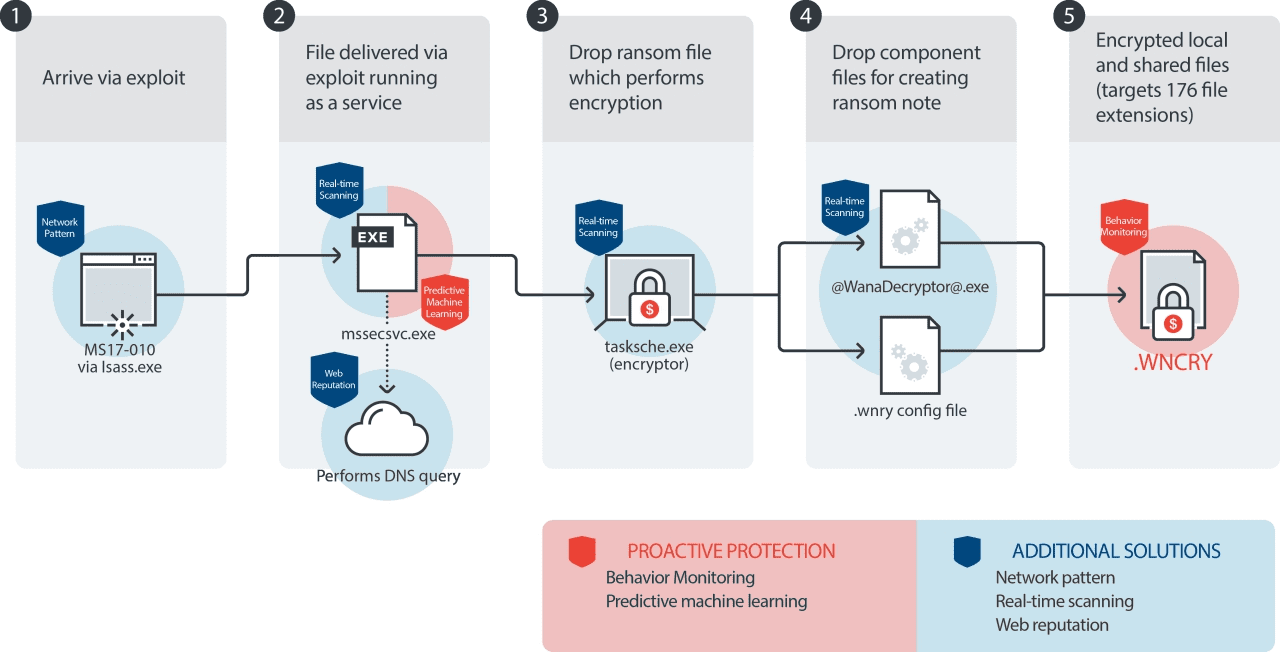
The strategic integration of AI into cybersecurity operations enhances an organization’s ability to anticipate, respond to, and recover from cyber threats. AI-driven security strategies encompass not just threat detection but also incident response, risk assessment, and security policy management.
Continuous Learning and Adaptation
AI systems continuously learn from the cyber threats they detect and from the outcomes of their defensive measures, using this knowledge to strengthen future security postures. This capability for continuous improvement is vital in an ever-evolving threat landscape.
Customized Defense Mechanisms
AI can tailor security measures to the specific needs and vulnerabilities of an organization. By analyzing past incidents and current configurations, AI tools can recommend security best practices and configurations that bolster defenses against targeted attacks.
Enhancing Human Expertise
AI augments the capabilities of cybersecurity professionals by handling routine monitoring and analysis, freeing human experts to focus on more complex threat investigations and strategic planning. This synergy between human intelligence and artificial intelligence creates a robust defense mechanism against cyber threats.
Conclusion
AI’s role in cybersecurity represents a paradigm shift towards more dynamic, intelligent, and proactive defense mechanisms. As cyber threats grow in sophistication, the strategic implementation of AI in cybersecurity frameworks is not just advantageous but essential. By enhancing threat detection, providing actionable insights, and continuously adapting to new challenges, AI is setting a new standard for cybersecurity resilience, ensuring a safer digital environment for individuals and organizations alike.
AI in the Financial Sector: Revolutionizing Trading, Investment, and Fraud Detection
The financial sector has always been at the forefront of adopting cutting-edge technologies to enhance operational efficiency, client services, and security. Artificial Intelligence (AI) has emerged as a transformative force in finance, from automating trading strategies to revolutionizing fraud detection mechanisms. This blog explores the multifaceted role of AI in the financial industry, highlighting its impact on trading, investment, and fraud prevention through real-world applications and a compelling case study.
Automating Trading and Investment Strategies
- Enhanced Market Predictions: AI algorithms analyze vast datasets, including market trends, economic reports, and news articles, to predict stock market movements with unprecedented accuracy. This capability allows traders and investors to make more informed decisions, optimizing their investment strategies for better returns.
- Algorithmic Trading: AI-powered algorithmic trading systems execute trades at the best possible prices, utilizing advanced mathematical models to make high-speed trading decisions. This not only increases efficiency but also minimizes the impact of large transactions on market prices.
- Portfolio Management: Robo-advisors, powered by AI, provide personalized investment advice to clients, tailoring portfolios to individual risk tolerances and investment goals. These platforms continuously monitor market conditions, adjusting portfolios in real-time to optimize performance.
AI in Fraud Detection to the PM of India!
- Real-time Transaction Monitoring: AI systems monitor financial transactions in real-time, identifying patterns and anomalies that may indicate fraudulent activity. This prompt detection enables financial institutions to act swiftly, mitigating potential losses.
- Predictive Fraud Analytics: Leveraging historical data, AI models predict future fraud tactics, allowing banks and financial institutions to proactively update their defense mechanisms against sophisticated scams.
- Enhanced Authentication Processes: AI enhances security protocols through biometric verification methods, such as facial recognition and fingerprint scanning, adding an extra layer of protection against identity theft and unauthorized access.
Case Study: AI’s Role in Preventing a Multimillion-Dollar Fraud
Background
A leading global bank was targeted by a sophisticated cyber fraud scheme aiming to siphon off millions of dollars through a series of unauthorized transactions. Traditional security measures failed to detect the anomaly due to the complexity and stealthiness of the attacks.
AI Intervention
The bank deployed an AI-driven security system designed to analyze transaction patterns and flag anomalies. The AI system used machine learning algorithms to learn from historical transaction data, enabling it to recognize even the most subtle signs of fraudulent activity.
Outcome
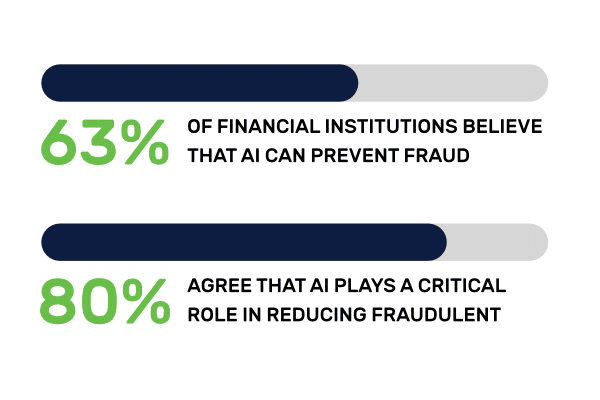
Within days of implementation, the AI system identified unusual patterns in a series of transactions that had gone unnoticed by traditional monitoring systems. The AI’s alerts enabled the bank to freeze the affected accounts, preventing the transfer of approximately $20 million to fraudulent accounts. Further investigation revealed a sophisticated network of compromised accounts and transactions designed to launder the stolen funds.
Impact
This incident not only showcased AI’s ability to detect and prevent sophisticated financial fraud but also highlighted the technology’s potential to save financial institutions millions of dollars. The bank has since expanded its use of AI across other operational areas, significantly enhancing its overall security posture and operational efficiency.
Conclusion
AI’s integration into the financial sector is not just a trend; it’s a fundamental shift towards smarter, more secure, and efficient financial operations. By automating trading and investment strategies, AI enables better decision-making and improved financial outcomes. In fraud detection, AI’s real-time monitoring and predictive analytics offer a formidable defense against increasingly sophisticated financial crimes. As AI technology continues to evolve, its role in shaping the future of finance becomes ever more significant, promising a new era of innovation and security in the financial world.
Transforming Finance: AI’s Role in Innovating Investment and Security for Millennials and Beyond
Background:
Finance is changing fast thanks to smart computers called Artificial Intelligence (AI). Younger people, like Millennials and Gen Z, want easier, safer, and more personal ways to handle their money. They have lots of information and want investment options that match their goals and fit their digital lives.
To meet these needs, banks and finance companies are using AI. These smart technologies can analyze huge amounts of data quickly. They can also create personalized investment plans, boost security, and make using finance apps smooth and easy.
Impact:
The effect of AI in finance, especially in investing, is big:
1. Personalized Plans:
AI helps make custom investment plans. It looks at what someone wants to do with their money, how much risk they’re okay with, and what’s happening in the market right now. For example, it might suggest funds that focus on things like the environment for someone who cares about that.
2. Better Security:
Security is super important in finance. AI helps keep investments safe by spotting anything fishy or unusual. This makes Millennials and Gen Z feel more secure using AI-powered finance apps.
3. Easy to Use:
AI makes finance apps friendlier and easier to use. They have clear screens, show updates in real-time, and send reminders that are just right for each person. This makes it simpler for Millennials, who love digital stuff, to manage their money.
Outcome:
1. Personalized Investment Strategies:
AI makes special investment plans based on what each person wants. It might suggest eco-friendly funds for someone who cares about the environment and wants to invest in companies doing good things.
2. Safer Investing:
AI keeps an eye on accounts all the time. It can catch any strange activity and protect people’s money from scams or fraud.
3. Easy-to-Use Apps:
With AI, finance apps are easier to understand and use. They have clear buttons, show updates quickly, and send reminders that fit each person’s needs.
How AI Helps:
Here’s how AI is used in finance:
- Sorting Data: AI quickly looks at tons of financial info, market trends, and what people want to suggest the best investment options.
- Predicting Trends: By looking at past patterns, AI can guess what might happen in the market in the future.
- Robo-Advisors: These are smart advisors that use algorithms to give investment advice, manage portfolios, and make changes when needed.
- Keeping Things Safe: AI checks transactions to find anything suspicious and makes finance platforms more secure.
Conclusion:
Finance is changing fast with AI. It’s not just about cool technology; it’s about making money easier for Millennials and Gen Z. By offering personalized plans, better security, and user-friendly apps, AI is changing how we invest. As AI gets better, finance will keep changing, making investing simpler, safer, and more in line with what younger generations want.
Navigating the Ethical Frontier: AI’s Moral Implications for Tomorrow’s Society
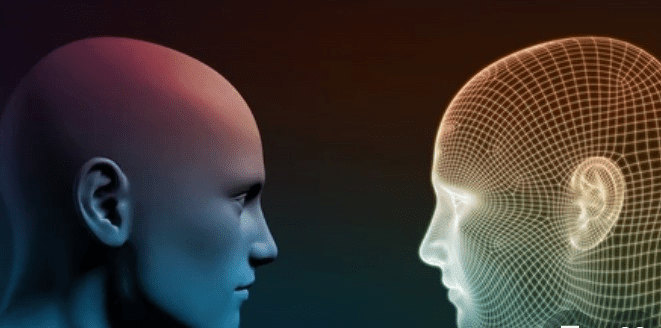
Navigating the Moral Landscape of AI (RTI)
- Privacy Concerns: AI’s ability to collect, analyze, and store vast amounts of personal data raises significant privacy issues. Ensuring the confidentiality and security of this data is paramount.
- Bias and Fairness: AI systems can perpetuate and even amplify biases present in their training data, leading to unfair outcomes. Addressing these biases to ensure fairness in AI applications is a major ethical challenge.
- Transparency and Accountability: The “black box” nature of some AI systems makes it difficult to understand how decisions are made, raising questions about transparency and accountability in AI-driven decisions.
- Autonomy and Human Oversight: Balancing AI autonomy with the need for human oversight is crucial to prevent unintended consequences and ensure that AI systems act in the best interests of humanity.
WHO AI Guidelines: Establishing Ethical Frameworks
In response to the growing ethical concerns surrounding AI, the WHO has outlined guidelines to ensure the ethical use of AI in healthcare, which can serve as a model for other sectors:
- Protecting Human Autonomy: Ensuring that AI systems enhance human decision-making without undermining human autonomy.
- Promoting Human Well-being and Safety: AI applications should prioritize human well-being and safety, avoiding harm and ensuring benefits outweigh risks.
- Ensuring Transparency, Explainability, and Understanding: AI systems should be transparent, with decisions explainable to end-users and stakeholders.
- Fostering Inclusiveness and Equity: AI technologies should be accessible to all, avoiding discrimination and promoting equity.
- Promoting AI Responsiveness and Sustainability: AI systems should be adaptable, responsive to societal needs, and environmentally sustainable.
Balancing Innovation with Ethics in AI Development
The tech industry is actively seeking ways to address these ethical considerations without stifling innovation:
- Developing Ethical AI Guidelines and Standards: Many tech companies and industry groups are drafting their own sets of ethical guidelines for AI development, often incorporating principles like transparency, fairness, and accountability.
- Implementing AI Ethics Boards: Several organizations have established ethics boards or committees to oversee AI projects, ensuring they adhere to ethical standards and societal values.
- Prioritizing Diversity in AI Development Teams: To combat bias, companies are focusing on diversity in teams developing AI, ensuring a wide range of perspectives are considered in the design and implementation of AI systems.
- Engaging in Public Dialogue and Collaboration: Engaging with stakeholders, policymakers, and the public is essential for understanding societal expectations and concerns about AI, leading to more ethically aligned innovations.
Conclusion
The ethical dimension of AI poses complex challenges that require thoughtful consideration and action from all stakeholders involved in AI development and deployment. By adhering to established guidelines like those proposed by the WHO, and by prioritizing ethical considerations in the innovation process, the tech industry can navigate the moral landscape of AI. This balanced approach ensures that AI technologies enhance our lives while respecting our values, rights, and dignity.
The Future of Work: Empowering Gen X with AI-Driven Opportunities and ChallengesAI’s

Impact on Employment
- Job Creation: AI is not just a harbinger of job displacement; it’s a creator of new opportunities. Roles in AI development, data analysis, and cybersecurity are expanding, fueled by the growing need for expertise in these areas.
- Job Transformation: Many existing jobs are being transformed rather than eliminated, as AI takes over routine tasks, allowing humans to focus on higher-level functions. This transformation demands a shift in skills, emphasizing creativity, strategy, and interpersonal dynamics.
- Job Displacement: While AI’s capacity to improve efficiency is undeniable, it also leads to the displacement of jobs, particularly those involving repetitive or routine tasks. This displacement underscores the need for adaptive skills and continuous learning.
Preparing for an AI-Driven Future
- Emphasizing Soft Skills: As AI handles more technical tasks, soft skills like critical thinking, creativity, and emotional intelligence become paramount. These skills enable humans to complement AI’s capabilities effectively.
- Fostering Technical Acumen: Understanding the basics of AI and machine learning, regardless of one’s primary job function, will be beneficial. Familiarity with these technologies allows for more innovative and effective collaboration between humans and AI systems.
- Lifelong Learning and Reskilling: The pace of technological change necessitates a commitment to lifelong learning. Workers must be prepared to reskill or upskill, adapting to new roles and industries transformed by AI.
Case Study: The Transformation of the Retail Industry by AI
Opportunities
- Personalized Customer Experience: AI enables retailers to offer personalized shopping experiences, using data analytics to tailor product recommendations and marketing strategies to individual consumer preferences.
- Inventory and Supply Chain Optimization: AI-driven predictive analytics help retailers manage inventory more efficiently, reducing waste and ensuring products are in stock when and where they’re needed.
Challenges
- Workforce Adaptation: The retail workforce must adapt to a landscape where AI handles inventory management, customer inquiries, and even sales processes, requiring employees to develop new skills focused on oversight, customer engagement, and tech integration.
- Ethical and Privacy Concerns: Personalization relies on collecting and analyzing vast amounts of consumer data, raising concerns about privacy and data protection that retailers must address.
Conclusion
The future of work in an AI-driven world is not a zero-sum game between humans and machines but a collaborative evolution. By understanding AI’s impact on employment, preparing with the right skills and education, and learning from industries already undergoing transformation, we can navigate the challenges and seize the opportunities presented by AI. This approach ensures a future where AI enhances the work environment, creating new possibilities for innovation, efficiency, and job satisfaction.
Privacy in the AI Era: Safeguarding Personal Data from Gen Z to Baby Boomers
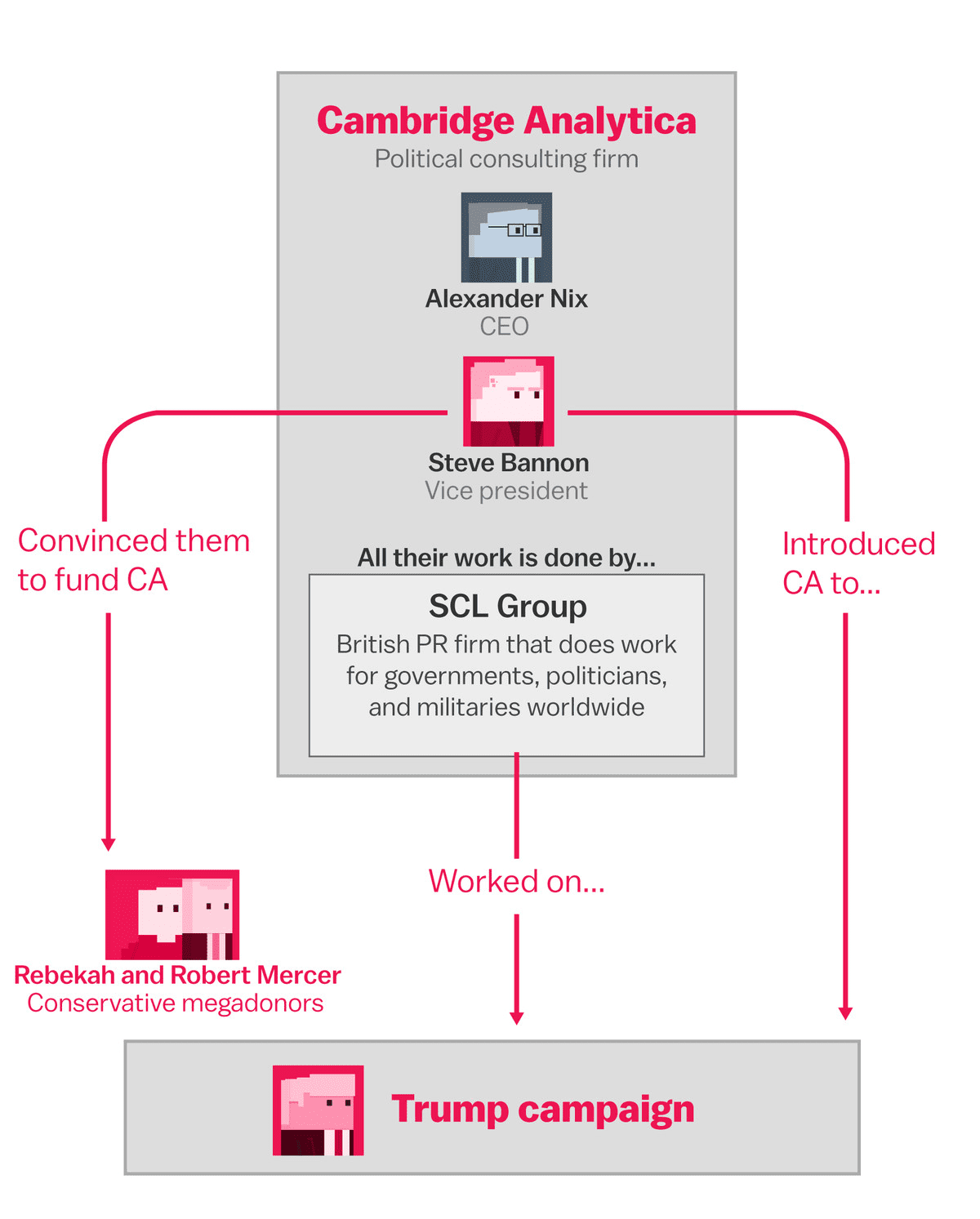
The intersection of Artificial Intelligence (AI), privacy, and society is a complex domain, marked by significant benefits and equally substantial concerns. As AI technologies become more integrated into our daily lives, their impact on privacy has sparked a heated debate. This blog explores the nuances of AI in surveillance, the use of personal data, and outlines strategies to navigate these privacy concerns, supported by a poignant case study.
The Surveillance Debate
- Increased Surveillance Capabilities: AI enhances the ability to monitor activities in real-time, offering unprecedented levels of surveillance. This capability, while beneficial for security, raises critical privacy issues.
- Implications for Privacy: The use of AI in public and private surveillance systems can lead to a society where every movement is tracked, eroding the sense of privacy and freedom.
- The Double-Edged Sword: While AI-driven surveillance can help prevent crimes and enhance safety, it also poses significant risks if misused, leading to potential overreach by authorities or corporations.
AI and Personal Data
- Data as the Lifeblood of AI: AI systems require vast amounts of data to learn and make decisions. This often includes sensitive personal information, raising concerns about how this data is collected, used, and stored.
- Risks Involved: The misuse of personal data can lead to identity theft, financial fraud, and an invasion of privacy. Additionally, there’s the risk of AI algorithms making biased decisions based on this data, affecting lives and livelihoods.
- Anonymity in the Age of AI: The challenge of maintaining anonymity becomes harder as AI technologies become better at identifying patterns and linking disparate pieces of data to individuals.
Navigating Privacy Concerns
- Transparent Data Practices: Companies and organizations should adopt transparent data practices, clearly explaining how data is collected, used, and protected.
- Enhancing Data Security: Implementing robust data security measures to protect personal information from unauthorized access and breaches is essential.
- Regulatory Compliance and Oversight: Adherence to data protection regulations, such as GDPR in Europe, helps ensure that AI applications respect privacy and individual rights.
Case Study: The Cambridge Analytica Scandal
Background
The Cambridge Analytica scandal is a stark reminder of the risks posed by the misuse of personal data in the age of AI. In this case, data from millions of Facebook users was harvested without consent to build detailed profiles, which were then used to target political advertising.
Lessons Learned
- Need for Consent: The scandal highlighted the critical importance of obtaining informed consent from users before collecting and using their data.
- Regulatory Response: It prompted a significant regulatory response, including fines for Facebook and increased scrutiny of data privacy practices industry-wide.
- Public Awareness: The scandal raised public awareness about data privacy, leading to greater demand for transparency and control over personal information.
Conclusion
The relationship between AI, privacy, and society is fraught with challenges but also rich with potential for positive change. By implementing transparent data practices, enhancing security measures, and adhering to strict regulatory standards, it is possible to harness the benefits of AI while protecting individual privacy. The Cambridge Analytica scandal serves as a cautionary tale, reminding us of the need to balance innovation with ethical considerations to ensure a future where technology serves humanity without compromising our rights and freedoms.
From Digital Natives to AI Innovators: Preparing Gen Z and Gen Alpha for a Tech-Driven Future
Introduction
Gen Z, the digital natives, have grown up in a world where technology is a constant. Unlike any generation before them, their lives are intricately woven with digital threads, and AI is set to magnify this integration further.
The Role of AI in Education
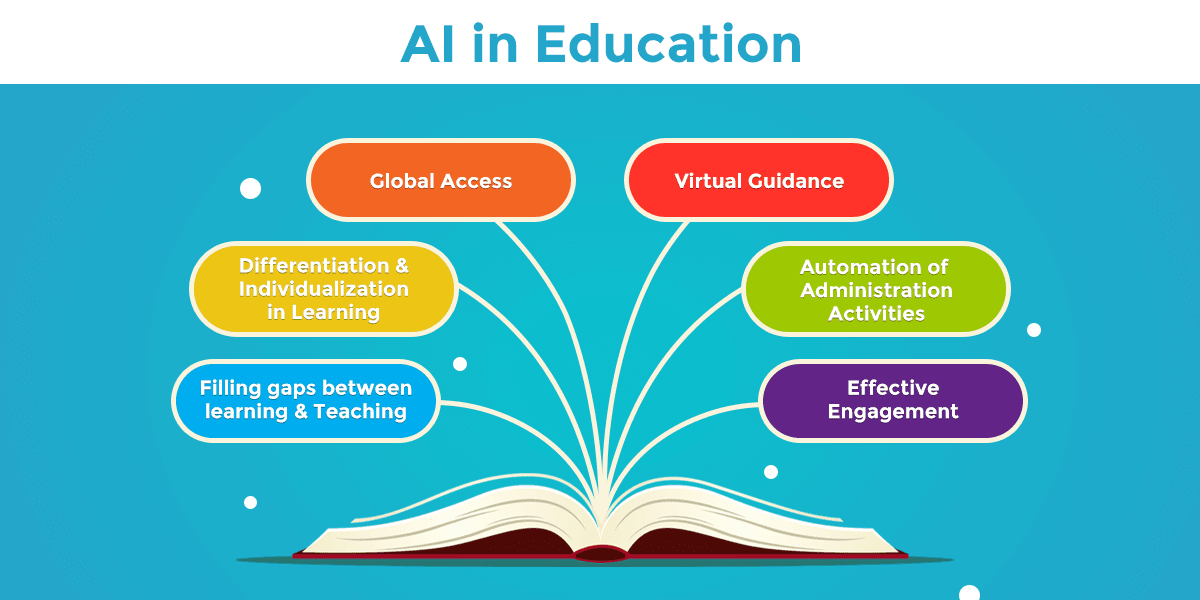
- Personalized Learning Experiences:
- Case Study: Carnegie Learning’s AI-driven platforms have shown significant improvements in student outcomes by adapting to individual learning styles, demonstrating the potential of personalized education.
- Virtual Classrooms and Tutors:
- Case Study: Duolingo, with its AI-powered language learning app, offers personalized lessons and feedback, showcasing how virtual tutors support language acquisition.
AI in Daily Life
- Social Media and Entertainment:
- Case Study: TikTok’s algorithm, which curates content based on user interactions, illustrates AI’s role in shaping the entertainment landscape for Gen Z.
- Smart Devices and Assistants:
- Case Study: The integration of AI in devices like Amazon Echo and Google Home has revolutionized how Gen Z interacts with technology for convenience and entertainment.
AI’s Impact on Future Careers
- Emerging Job Markets:
- Case Study: The rise of AI in healthcare, with platforms like Babylon Health, is creating new career paths in AI-driven diagnostic services.
- Skills for the Future:
- Case Study: IBM’s P-TECH program partners with high schools to teach skills for tomorrow’s jobs, emphasizing the importance of AI literacy.
Ethical Considerations and Digital Responsibility
- Case Study: The partnership between IBM and the Responsible AI Institute aims to develop ethical AI guidelines, highlighting the need for responsible AI usage.
Conclusion
Gen Z stands at the forefront of an AI-enhanced future. By embracing AI in education, daily life, and career preparation, while also navigating its ethical implications, they are poised to lead a tech-driven world with innovation and responsibility.
Growing Up with AI: How Gen Alpha Will Live, Learn, and Play
Introduction

Generation Alpha, the first to be born entirely within the 21st century, is set to have the most natural integration with AI, impacting their learning, play, and daily routines from the earliest stages of life.
AI in Learning and Development
- Interactive Educational Toys:
- Case Study: Cognitoys’ Dino, an AI-powered educational toy, engages children with conversational learning and personalized content, demonstrating AI’s role in early development.
- Customized Educational Pathways:
- Case Study: Khan Academy uses AI to adapt lessons to each student’s pace and style, offering a glimpse into personalized education for the youngest learners.
Growing Up with AI
- AI Companions:
- Case Study: Roybi Robot, an AI companion for children, provides personalized lessons in STEM, languages, and more, illustrating how AI companions can support childhood education.
- Safety and Monitoring:
- Case Study: The use of AI in apps like Family Link by Google helps parents monitor and manage their children’s digital activities, ensuring a safe online environment.
Preparing for a Tech-Savvy Future
- Early Tech Exposure:
- Case Study: LEGO’s Boost sets, combining traditional building with coding, show how children can be introduced to technology and AI concepts through play.
- The Future of Play:
- Case Study: The integration of AI in Pokémon GO creates an augmented reality experience that blends physical activity with digital exploration, redefining play for Gen Alpha.
Navigating the Digital World Responsibly
- Case Study: SuperAwesome’s technology ensures digital content for children is safe, showing the importance of creating a secure online ecosystem for Gen Alpha.
Conclusion
Generation Alpha will grow up in a world where AI is not just a tool but a companion in learning, play, and daily life. By ensuring they have the skills to use AI responsibly and creatively, we’re preparing them for a future where technology and human life are inseparably linked.
Transform your digital presence with our Fully Managed SEO Services and take advantage of a free SEO consultation today. Let us optimize your website for success. Visit Fully Managed SEO Services to see how we can help, and book your session at Free SEO Consultation for expert guidance tailored to your needs.



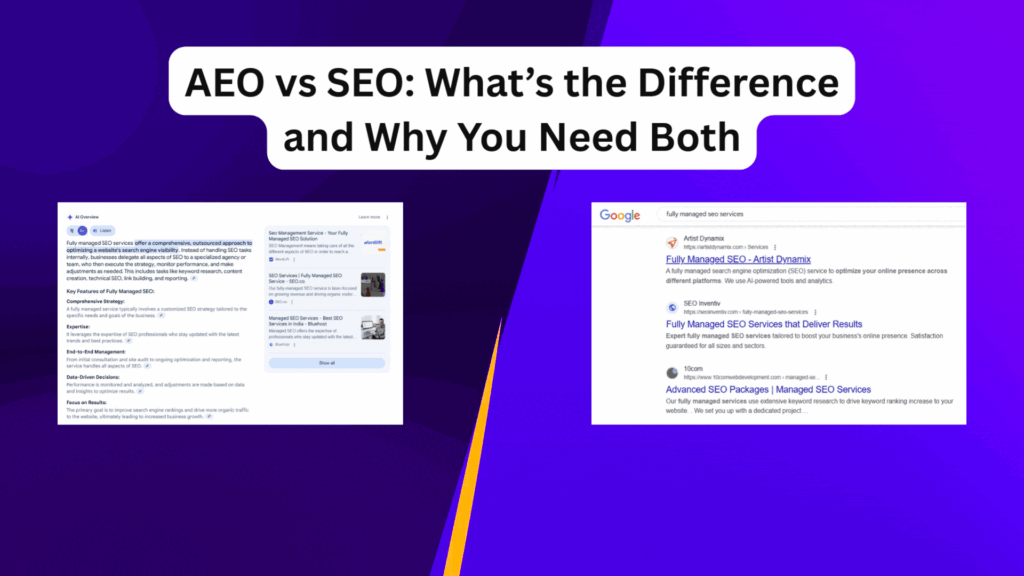
20 thoughts on “Can AI Connect Generations? 7 Revolutionary Advances Transforming Lives from Baby Boomers to Gen Alpha in March 2025!”
This page is fabulous. The brilliant information reveals the essayist’s interest. I’m awestruck and envision further such astonishing substance.
This is an amazing page. The outstanding information reveals the owner’s accountability. I’m in awe and eagerly await more amazing postings like this one.
Can you be more specific about the content of your article? After reading it, I still have some doubts. Hope you can help me.
I don’t think the title of your article matches the content lol. Just kidding, mainly because I had some doubts after reading the article.
Your point of view caught my eye and was very interesting. Thanks. I have a question for you.
Your article helped me a lot, is there any more related content? Thanks!
Thank you for your sharing. I am worried that I lack creative ideas. It is your article that makes me full of hope. Thank you. But, I have a question, can you help me?
Thank you for your sharing. I am worried that I lack creative ideas. It is your article that makes me full of hope. Thank you. But, I have a question, can you help me?
Thank you for your sharing. I am worried that I lack creative ideas. It is your article that makes me full of hope. Thank you. But, I have a question, can you help me?
I pay a quickk visit everyday a few web pages and information sites to
read posts, however this blog presents feature based articles. https://zeleniymis.COM.Ua/
Thanks for sharing. I read many of your blog posts, cool, your blog is very good.
Thank you for your sharing. I am worried that I lack creative ideas. It is your article that makes me full of hope. Thank you. But, I have a question, can you help me?
Pingback: how-to-use-ai-marketing-to-boost-your-online-business
Your point of view caught my eye and was very interesting. Thanks. I have a question for you. https://www.binance.com/bn/register?ref=UM6SMJM3
Your article helped me a lot, is there any more related content? Thanks!
Your article helped me a lot, is there any more related content? Thanks! https://accounts.binance.com/sl/register?ref=PORL8W0Z
Thank you for your sharing. I am worried that I lack creative ideas. It is your article that makes me full of hope. Thank you. But, I have a question, can you help me?
Thank you for your sharing. I am worried that I lack creative ideas. It is your article that makes me full of hope. Thank you. But, I have a question, can you help me?
Can you be more specific about the content of your article? After reading it, I still have some doubts. Hope you can help me.
Your article helped me a lot, is there any more related content? Thanks!